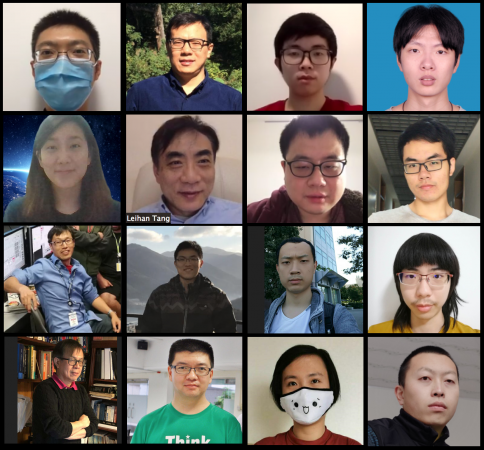
Physicists at HKBU have built a foundational transmission model to evaluate the efficacy of containment measures against the COVID-19 pandemic
Within weeks
In February 2020, Professor Leihan Tang and Dr. Liang Tian in the Department of Physics started an epidemic modeling project together with their collaborators and former students from HKBU (Fig. 1). The aim of the project was to profile the infected population at different stages of disease progression based on clinical data, and to evaluate the associated transmission capacities (Fig. 2). Upon careful calibration of the model, quantitative evaluation of various control measures to inform decision-makers and the general public became possible.
Their work introduced several novel modelling strategies
On COVID-19 intervention, their work systematically evaluated reduction of the basic reproduction number (R0) under specific transmission control measures, including contact tracing, expanded screening, social distancing, wearing masks, and regional lockdowns. Implementing these measures in concert, their effects on R0 multiply. For example, the combination of contact tracing and wearing masks in public places has a strong immediate effect on curbing epidemic growth. In reality, governments are often forced to adopt a more gradual approach due to economic and social considerations. The disease transmission model can help to optimise the decision-making process against the changing situation.
Since this work was first posted, it has attracted broad attention from many parts of the world. In particular, evaluation of the efficacy of mask wearing was used in a number of public health initiatives by health agencies, institutions, and media outlets (Fig. 3). The mask model was featured in a YouTube video that registered 1.3
Publication links: https://www.nature.com/articles/s41467-021-21385-z; https://www.pnas.org/content/118/4/e2014564118.
Previous News
Next News





